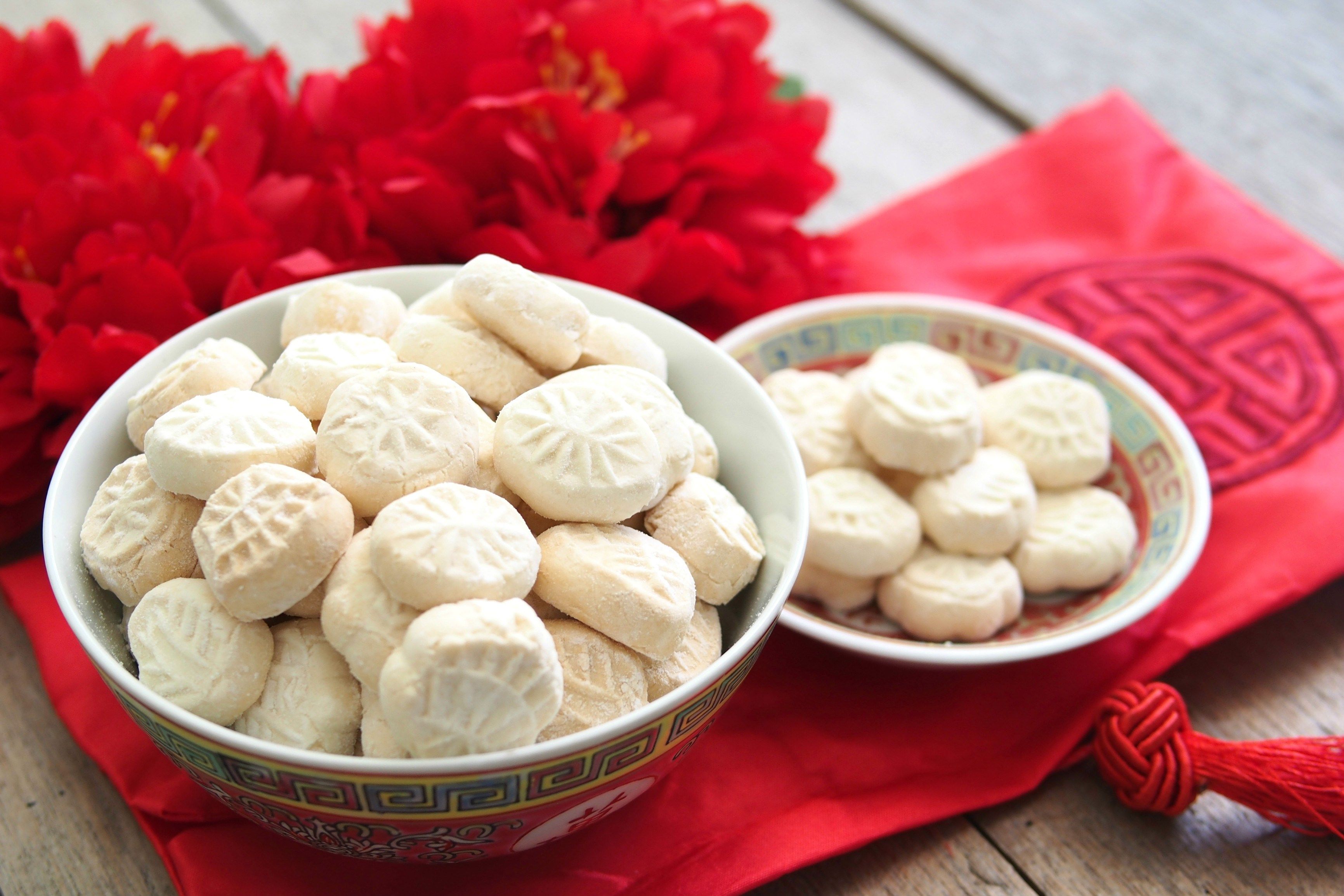Kuih Bangkit (Tapioca cookies) – a popular Chinese New Year goodies

Kue bangkit is a little bread roll (Kue or kuih) that produced using sago starch of Malay root, normally found in Indonesia and Malaysia. This roll has different tones, going from white, yellowish to brown, relies upon the extra fixings. In Indonesia, kue bangkit is related to the Malays people group of Riau[8] and Riau Islands regions. While in Malaysia, kuih bangkit is related to the Malays and Nyonya people group. It is one of the runs of the mill conventional Malay treats, generally connected with Hari Raya and Chinese New Year. This coconut sago treat is called
The surface of the kue bangkit is firm and will in general be fragile. The batter is shaped utilizing little treat molds, and therefore, the treats being heated utilizing the stove. Eating this cake will give the vibe of dissolving in the mouth. Nonetheless, the surface remaining parts fresh when bitten. Kue bangkit has a sweet and appetizing flavor. Kue is an Indonesian scaled-down tidbit or treats food. Kue is a genuinely expansive term in Indonesian to depict a wide assortment of tidbits; cakes, treats, misuses, pies, scones, and patisserie. Kue is produced using an assortment of fixings in different structures, some are steamed, seared, or heated. Kue is a mainstream nibble in Indonesia, which has the biggest assortment of kue. On account of the nations' verifiable provincial ties, Koeé (Kue) is additionally mainstream in the Netherlands.
Indonesian Kue exhibits neighborhood local delights, Chinese and Indian impacts, just as European cake and cake impacts. For instance, bak pia and Kue Ku are of Chinese Peranakan root, Kue putu is gotten from Indian puttu, while Kue Bugis, klepon, Nagasaki, getup, lupus, and Tajik are local beginning, then again, lapis genuine, Kue cubit, kastengel, rissoles, and pastel are European impacted. In Java, conventional kues are arranged under jajan pasar (lit: "market purchases" or "market munchies"). The very much set and pleasantly embellished bright different jajan pasar typically filled in as a food blessing, bundle or to go with tumpeng (the primary dish) during Javanese conventional services, read Kuih bangkit making secrets